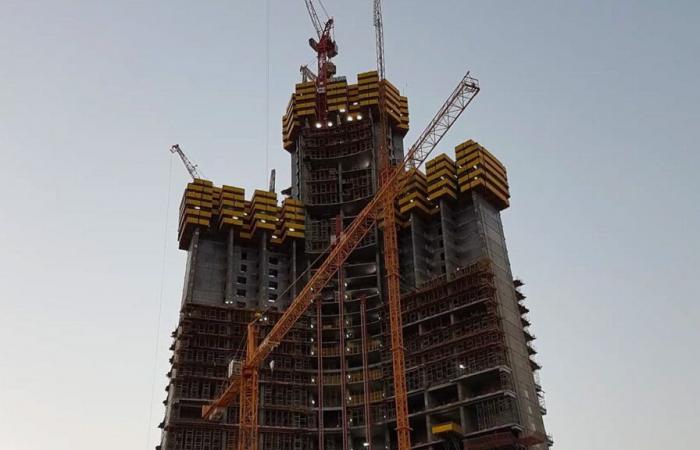Vertical architecture takes a spectacular new step with the announcement of the imminent completion of the tallest skyscraper in the world. This colossus of steel and glass, called JEC Tower (Jeddah Economic Company Tower), will rise to a dizzying height of 1,007 meters in the sky of Saudi Arabia. A titanic project that pushes the limits of engineering and modern architecture.
An ambitious project finally on track
After more than a decade of gestation and numerous twists and turns, the construction of the JEC Tower is entering its final phase. Initially known as the Kingdom Tower and Mile-High Tower, this pharaonic project had its share of challenges:
- Soil studies reveal impossibility of building mile-high tower
- Delays linked to political upheaval in Saudi Arabia
- The temporary arrest of Prince Al Waleed bin Talal Al Saud, main investor
Despite these obstacles, Prince Al Saud recently announced the resumption of work on social networks with a concise message: “We're back”. This declaration marks a decisive turning point for this project estimated at $1.9 billion.
An architectural and technical feat
The JEC Tower is the work of the architectural firm Adrian Smith + Gordon Gill. This is not Adrian Smith's first attempt, having already designed the current tallest building in the world, the Burj Khalifa in Dubai. To give an idea of the scale of the project, here is a comparative table:
| Building | Height |
|---|---|
| JEC Tower | 1 007 m |
| Burj Khalifa | 828 m |
| One World Trade Center | 541 m |
| Empire State Building | 381 m |
| Tour Eiffel | 324 m |
The design of the tower is inspired by folded leaves of a desert plantgiving it a unique triangular shape. This structure is not only aesthetic, it is designed to withstand the violent winds that blow at such altitudes. Notches on three sides of the building also provide natural protection from the scorching desert sun.
A technical challenge worthy of the project
The creation of such a building requires unprecedented feats of engineering. The foundations of the JEC Tower are based on a system of 270 bored piles reaching depths of up to 105 meters. This solid base is essential to firmly anchor the structure in the ground and ensure its stability.
Inside, the tower will include:
- 157 floors
- 59 super-fast elevators
- The highest observation point in the world
- A luxury hotel
- Office spaces
- High-end residences
This extreme verticality poses new challenges in terms of vertical circulation, water supply and energy. Engineers must constantly innovate to meet these new requirements. For comparison, a fully 3D printed hotel will open in Houston in 2026, illustrating another facet of modern construction innovation.
Towards new architectural horizons
With an expected completion date of 2028, the JEC Tower is poised to redefine the standards of vertical architecture. This colossal project nevertheless raises questions about the sustainability and relevance of such constructions in a context of climate change and reflection on the urban planning of the future.
While the race for height seems to be intensifying, with persistent rumors regarding a proposed mile high skyscraper by Foster + Partners, the JEC Tower will likely remain the tallest building in the world for many years. It symbolizes man's disproportionate ambition to push the limits of what is possible, while raising questions about the future of our cities and our relationship to urban space.






